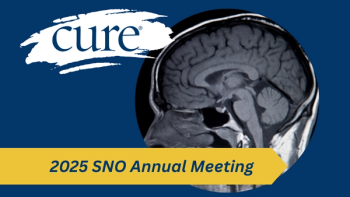
FDA Grants Polivy Accelerated Approval for DLBCL
The FDA has granted an accelerated approval to Polivy for use in combination with bendamustine and Rituxan for the treatment of patients with relapsed/refractory diffuse large B-cell lymphoma who have received at least two prior therapies.
The U.S. Food and Drug Administration (FDA) has granted an accelerated approval to Polivy (polatuzumab vedotin) for use in combination with bendamustine and Rituxan (rituximab) for the treatment of patients with relapsed/refractory diffuse large B-cell lymphoma (DLBCL) who have received at least two prior therapies.
"Antibody-drug conjugates are an emerging class of targeted immunotherapies for cancer. This type of therapy, unlike traditional chemotherapy, is intended to target specific cells," Richard Pazdur, M.D., director of the FDA's Oncology Center of Excellence and acting director of the Office of Hematology and Oncology Products in the FDA's Center for Drug Evaluation and Research, said in a statement. "Today's approval of Polivy provides an alternative option for patients in whom multiple treatments have not worked.
Patients with relapsed/refractory DLBCL and those who are ineligible for transplant have limited treatment options and a poor prognosis. CD79b is a component of the B-cell receptor and is expressed ubiquitously in DLBCL. Polivy is an anti-CD79b antibody linked to microtubule-disrupting monomethyl auristatin E.
Preliminary results from the phase 1b part of the trial provided evidence of the drug’s safety and efficacy in safety run-in, expansion and randomized cohorts, which were reported prior to the 2018 ASH meeting. The data presented at ASH included six patients from the safety cohort, 27 from the expansion phase and 80 from the randomized comparison of bendamustine/Rituxan with or without Polivy.
The median age across the cohorts ranged from 65 to 71, and from two-thirds to three-fourths of the patients in each cohort had received two or more prior lines of therapy. Additionally, 20% of the patients in the randomized study had undergone a transplant.
The primary endpoint of complete response was determined by independent review of PET—CT imaging at the end of treatment. Secondary endpoints included duration of response and progression-free survival (PFS) by independent review. Exploratory endpoints included duration of response and progression-free survival by investigator review, overall survival and efficacy by cell of origin and MYC/BCL2 double-expression (DE) status.
Median follow-up was 37.6 months for the safety cohort, 27.0 months for the expansion cohort and 22.3 months for the randomized comparison.
Three of six patients in the safety cohort attained complete response with the Polivy-bendamustine-Rituxan regimen. Duration of response, progression-free survival and overall survival could not be determined.
In the expansion cohort, 11 patients (41%) had objective responses by independent review. Median duration of response, median progression-free survivaPFSl and overall survivalOS were 28.4 months, 5.4 months and 10.8 months, respectively.
In the randomized, phase 2 component of the evaluation, 16 (40%) patients had complete responses in the Polivy arm as compared with seven (18%) patients who received bendamustine-Rituxan without the ADC. Median duration of response by independent review had yet to be reached in the Polivy arm as compared with 7.7 months in the control arm. By investigator assessment, median duration of response was 10.3 months with Polivy versus 4.1 months without.
Median progression-free survivalPFS by independent review was 11.1 months with Polivy and 3.7 months without. By investigator assessment, the median values were 7.6 versus 2.0 months without.
Analyses by cell of origin — activated B-cell like (ABC) or germinal B-cell like (GCB) — showed consistent advantages for the addition of Polivy. Median progression-free survivalPFS by investigator assessment and OS in the ABC subgroup were 10.8 months and 15.4 months, respectively, versus 2.0 and 4.7 months without Polivy. The GBC subgroup had inferior outcomes but still favored the ADC: 2.5 versus 1.9 months for median progression-free survival and 7.2 versus 3.8 months for overall survival.
Analysis by DE status showed median progression-free survival of 7.0 versus 1.4 months for the Polivy group among patients with DE and 6.2 versus 3.1 months for those without. Overall survival was 8.9 versus 4.6 months for the DE subgroup and 10.0 versus 4.5 months for patients without DE.
With continued follow-up, no new safety signals emerged, and the safety data remained consistent with initial reports from the study. The most common grade 3/4 side effect overall were infections and cytopenias. While infection and transfusion rates were similar with BR alone or the addition of Polivy, the rates of grade 3/4 cytopenias were higher in the ADC arm.
The accelerated approval of Polivy is contingent on a confirmatory trial.
This article originally appeared on





